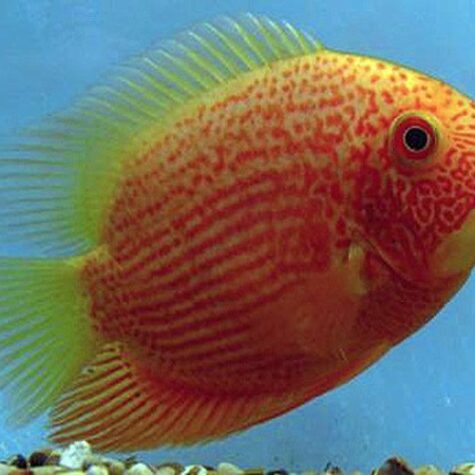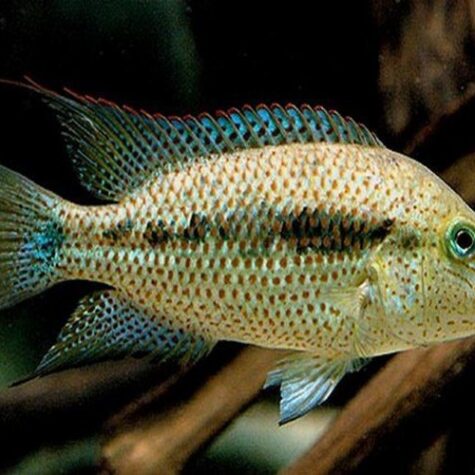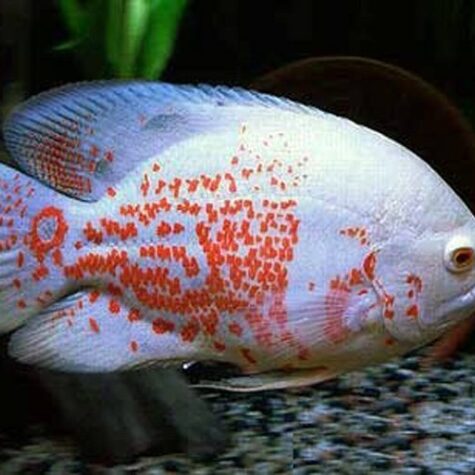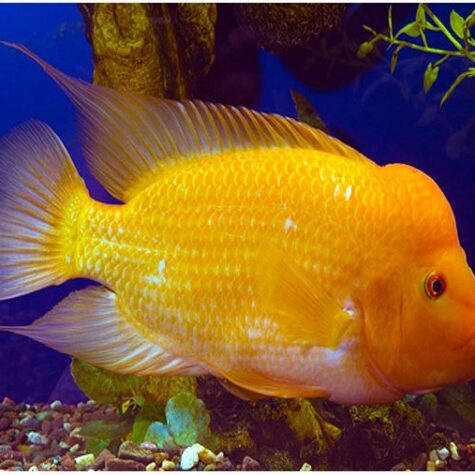$39.00
*NOTE: AS A FISH FARM, WE DO NOT OFFER GENDER SPECIFIC SEXING ON FISH STOCK. REQUEST FOR MALES OR FEMALES CAN ONLY BE ACCOMMODATED IF THE ITEM SPECIFIES GENDER IN THE DESCRIPTION SUCH AS: MALE BETTA, FEMALE GUPPY, ETC SORRY FOR ANY INCONVENIENCE.
Out of stock
Amphilophus festae (Ex-Cichlasoma festae), Festa Cichlid
Native to: Ecuador, South America
Size: Males: up to 18” in wild, Females up to 12”. Typically 8” in captivity
pH:6.8 to 7.0
dH: 2 to 18o
Temp:77-84F
True Red Terror vs. False (Mayan): The Festae is usually confused with the Mayan cichlid (Amphilophus urophthalmus). The best way to tell the difference between these cichlids when younger is look for a “y” that connects the vertical front bars on a festae’s body, where the Mayans do not touch each other. The Festae’s false eye spot on it’s tail is off center and up higher on the fin, the Mayan’s eye spot is centered.
Sexing True Red Terrors: Sexing is easy once they are older, but as youngsters, a bit more challenging. Males & females are very different in coloration as the females are generally breath-taking as opposed to males. Females keep their juvenile coloring and begin to get greatly pronounced with age while the male loses this extraordinary coloring as it ages. Females will have a bright yellow base with strong distinct bars, red fins & green spangling with red/orange hues on the front of their faces. Males will have more of a green base to their body, but both sexes have red fins & green spangling on the fins. Males rarely get a nuchal hump and if they do, it is not very pronounced.
This cichlid is known to be one of the most aggressive cichlids available, but they are generally more docile when young and do not come out of their shell until they are around 6” or larger. We always keep our Festae in large colonies and have avoided any type of fighting or aggressive behavior, but it does help to offer space and many rocky hiding places which offer refuge and territories. Breeding Festae is easy for most. As with most Central/South American fish just provide a flat surface like a rock or wood for egg laying. The males are usually abusive to the females during spawning so make sure to provide a place for the female to be able to get away after the mating is done.
Size at shipping: usually about 1.5″or about 6+ months old.
If you have any questions, please be sure to contact us.
We’ve found that using New Life Spectrum Ultra Red fish food will greatly enhance and improve the color on these fish significantly, naturally without hormones. See Related Items below to add to your order now!




